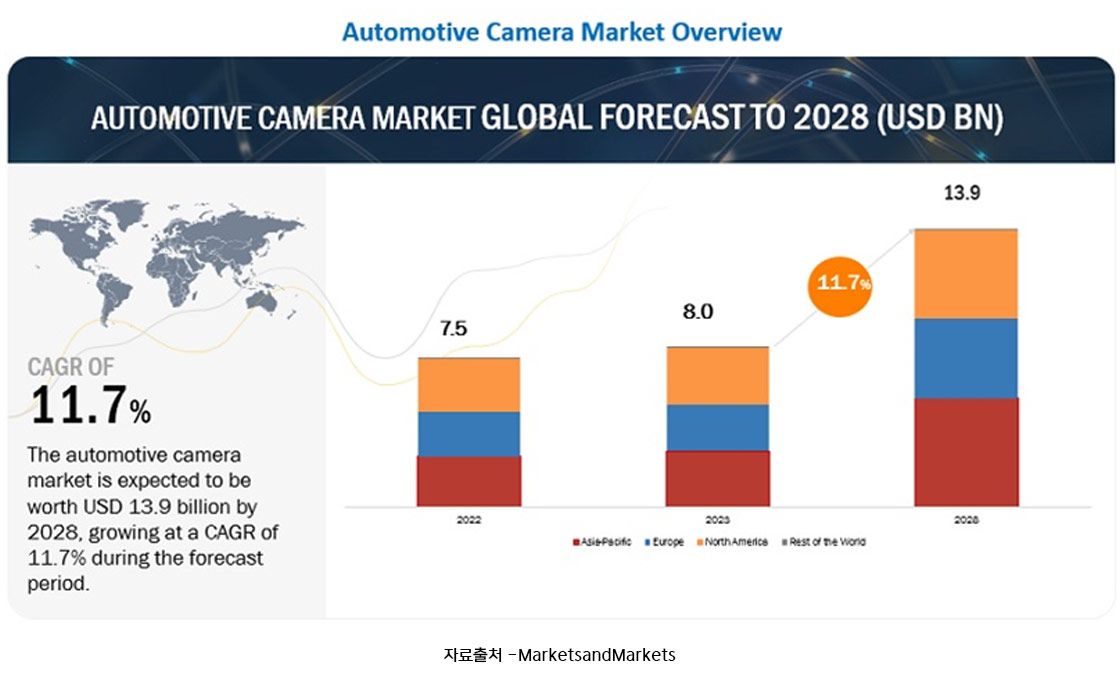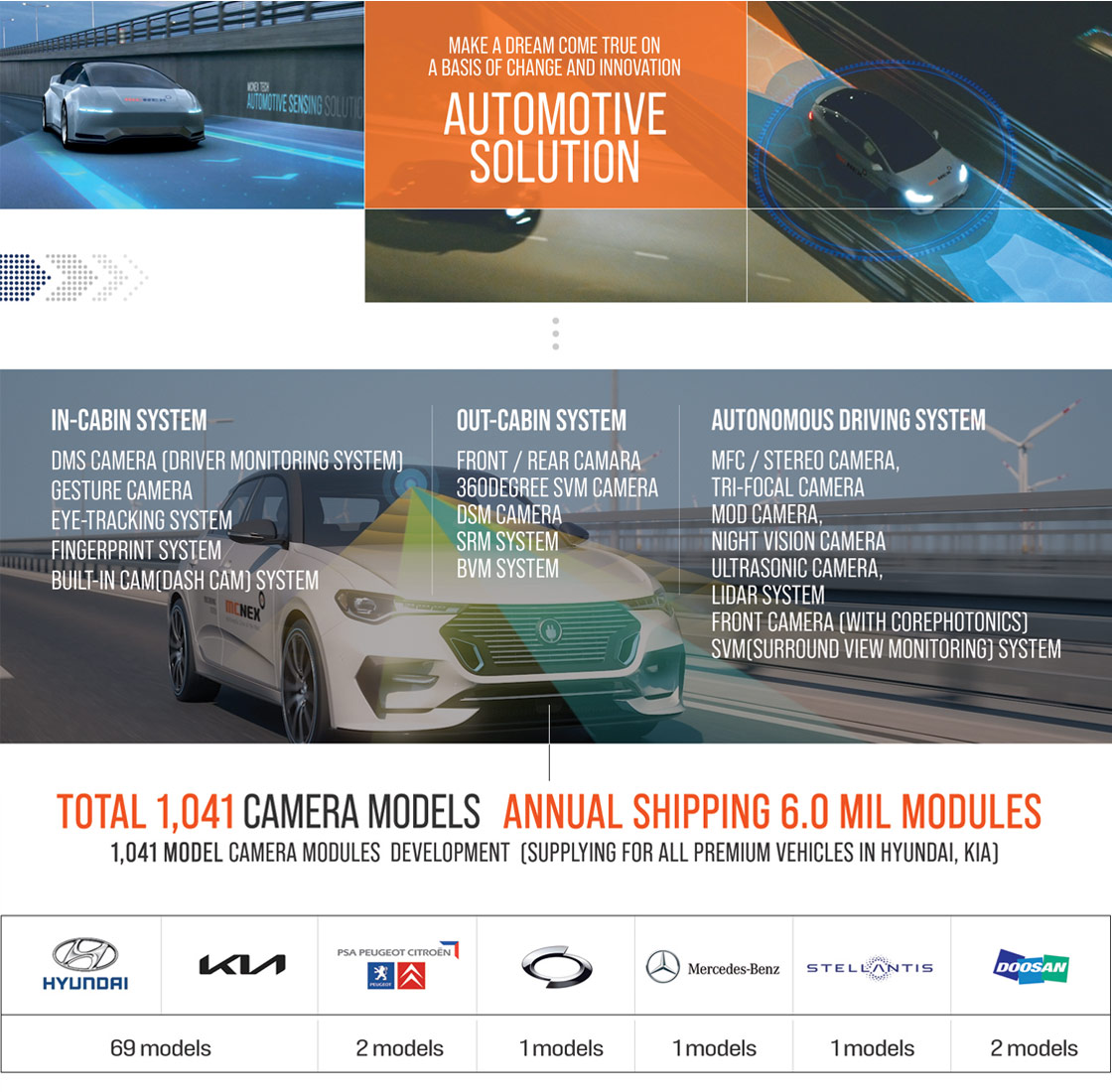Here we share with you
various MCNEX stories.
- 기술소식The core of autonomous driving sensor technology, vehicle sensing camera. DATE 2023-08-22
-
The core of autonomous driving sensor technology, vehicle sensing camera.
The automotive camera market is projected to grow from $8 billion in 2023 to $13.9 billion in 2028, with an average annual growth rate of 11.7%. Camera systems and technologies are being applied to various applications to control vehicles and enhance driving experiences.

The Eyes of Autonomy, The Key to Safer and Smarter Self-Driving
Autonomous driving technology stands as one of the most innovative fields within the modern automotive industry. Among these innovations, vehicle cameras serve as the "eyes" of automobiles, playing a crucial role in recognizing and analyzing the surrounding environment. In this article, we will delve into the significance of vehicle cameras and their pivotal role in the realm of self-driving.
Enhancing Visibility and Environmental Awareness
Vehicle cameras provide crucial information to both drivers and autonomous driving systems by capturing and relaying real-time images of the surrounding environment. Cameras positioned at the front, rear, and sides of the vehicle are capable of recognizing and analyzing lane markings, traffic signals, road signs, nearby vehicles, pedestrians, and more, enabling safe and precise driving.
Navigation and Driving Assistance
Vehicle cameras perform functions that involve examining and interpreting road conditions, assisting the car in maintaining proper lane positioning, and adapting to changes in the surrounding environment. They also support drivers in complex situations such as intersections and roundabouts, by providing guidance and driving instructions to ensure safe navigation.

Pedestrian and Bicycle Detection for Collision Prevention
Vehicle cameras are capable of detecting and recognizing pedestrians and bicycles in the surrounding environment. This enables the vehicle to anticipate potential collision risks and take preventive measures, ultimately enhancing driving safety by avoiding accidents that may occur ahead.

Data-Driven Learning and Improvement
Data collected by vehicle cameras is utilized for machine learning and artificial intelligence algorithms. Through this process, cameras continuously learn and improve their understanding of the environment, providing higher accuracy and performance.
Integration with Other Sensors
Vehicle cameras work in conjunction with radar, LiDAR, and ultrasonic sensors to integrate various sensor data. This enables the car to better comprehend and respond to the driving environment under diverse conditions.
Vehicle cameras serve as a core sensor in autonomous driving technology, significantly enhancing the safety and performance of vehicles. By recognizing the surrounding environment and analyzing data, they provide essential information to both drivers and autonomous systems, contributing to safer and more intelligent driving.
MCNEX battlefield camera supply status

Alongside the advancement of autonomous driving technology, the adoption rate of camera modules is rapidly increasing.
see more
https://www.mcnex.com/en/mediacenter/03.ME01.06?id=829